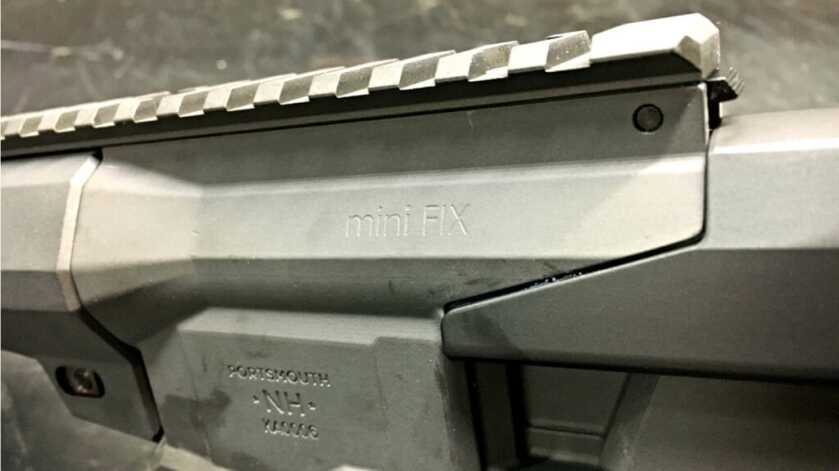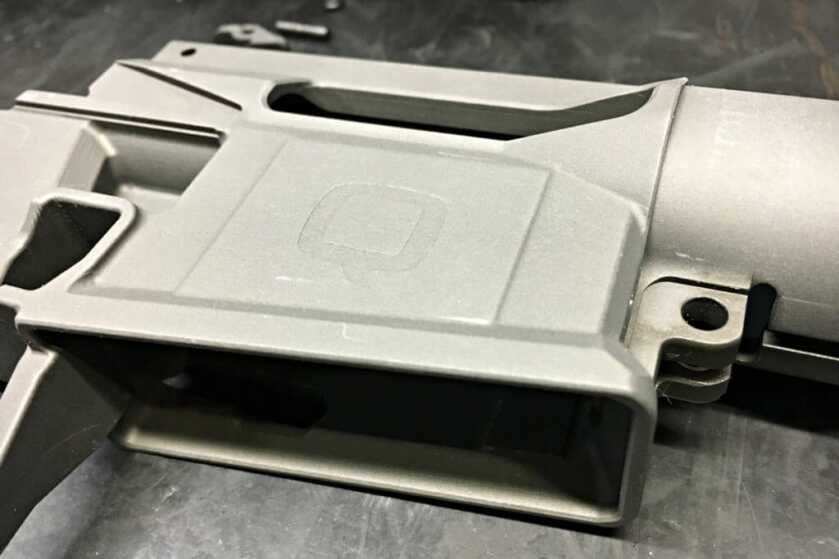This past winter, up in northern Idaho, a thought occurred to me… I was amazed thinking about how many different pieces of gear and equipment had to come together in order for me to go shooting or hunting. All the different components, getting sourced and assembled so that I could take a rifle or pistol to the range or into the backcountry.

I was also at the time thinking about what would be an ideal gun to hike into the backcountry with, up here in the Pacific North West. A spot here locally, which is so densely wooded, you pretty much have to hunt in clear cuts. And to that end, I thought a ideal weapon would be the new MiniFix by Q LLC, chambered in 300 Blackout.
So, after a number of calls and emails, my journey started. I was off to New Hampshire to visit the crew at Q and have a hand in building my new gun, the MiniFix…
If you are unfamiliar with Q and their products, to include The Fix, they are a small company out of Portsmouth, New Hampshire. They make a handful of high end firearms and silencers, one of which is The Fix. Their newest offering is their MiniFix, a scaled version of its big brother.
Arriving at Q I met up with Brian, one of their engineers. Over the next number of hours, he walked me through building my MiniFix, once piece at a time.

To take a 30,000 foot view of the MiniFix, and subsequently The Fix, it looks by all accounts almost like a bolt action dropped into a chassis. This couldn’t be farther from the truth. The rifle (and in this case pistol) was designed and built from the ground up, from scratch. The approach being to make a lightweight, accurate and ergonomic bolt action. They decidedly achieved this with the design.
As I began assembling my MinFix with Brian I was blown away at all the nuanced features. For one, while it is a bolt action, the throw is only 45 degrees. Short and clean. This in turn make cycling the action incredibly fast. Also, the bolt runs on rails. So rather than your traditional bolt action where you are essentially manipulating a tube inside of a tube, you can run into situations where the bolt binds on itself. By running the action on rails, almost like a pistol slide, this is alleviated.
One of the cooler parts of the assembly process occurred with putting the internals of the bolt together, the firing pin, spring and what not. At Q they fashioned a number of jigs or fixtures to help with assembly. The firing pin and spring is one such place these are used. By placing the firing pin and spring together, the fixture applies a ton of pressure through leverage to compress the spring. Then it is just a matter of placing some spring cups onto the firing pin, similar in the way a glock striker spring is captured, and then releasing the fixture. This locks the spring in around the firing pin.
Also unique in the design, is that the sear is located on the bolt. Inside the one piece receiver, modeled after an AR style rifle, you simply have a trigger. The trigger actually extends up to make contact with the sear in the bolt assembly. And speaking of triggers, they manually test all of their triggers, collecting the trigger trace (waveform) to make sure it meets their specs. I will say their trigger is one of the nicest and cleanest I have felt.

With respect to the receiver, it went together much like any other AR-15 lower receiver, save the trigger uses 1 pin rather than 2. In order to ensure the trigger pin doesn’t back out, since it is no longer kept in place by the spring legs of the hammer, a second detent pin is used. The pin can be accessed under the pistol grip, just like the pin that makes contact with the safety selector drum on an AR. And just like the pin for the safety, it is followed with a small spring.
When it comes down to ergonomics, the MiniFix is hard to beat. It mirrors an AR’s controls. Both with the selector placement and the magazine release. It also uses your standard magazines, the MiniFix using AR-15 magazines while the full size Fix uses AR-10 patterned magazines. This opens the door for the consumer to easily source magazines. Rather than being tied to some sort of proprietary magazine.
Another aspect of the MiniFix which is unique, is the Q-Sert rail. It manages to be lighter than M-LOK and at the same time being stronger in its method of attachment. Rather than using the M-LOK piece that twists and binds on the rail, the Q-Sert actually has steel inserts pressed into the rail, allowing sections to be threaded directly in. One of the Q-Sert offerings is a direct mount for an Atlas Bipod as well.

When it comes to the barrel, Q has some interesting stuff going on. For starters, on the MiniFix, they are using a 8” 300 Blackout barrel. To get the most accuracy out of the heavy subsonic loads, the barrel twist is 1:5. While slower barrel twists are fine for lighter bullets, a fast twist is necessary in order to stabilize the heavy 180gr+ bullets at subsonic speeds.
Also, like all Q weapons, the barrel ends in a taper. This allows for their muzzle device, the Cherry Bomb, to be attached without the need for timing. The tapers create alignment and smear together to create a super tight fit. I was able to put the Cherry Bomb on with a torque wrench, without the need for anything like Rocksett. The tapers are used on the outside of the Cherry Bomb as well, to ensure alignment and seal off the gasses when their silencers are attached.
Rounding off the MiniFix pistol, is of course a pistol brace. Q worked closely with SB Tactical to create a really well executed brace. The body of the brace is formed in such a way that when the brace is folded, the bolt knob is protected and captured in a cutout. Then with a short pull, the brace folds out, locking securely in position.

Putting the MiniFix together under the watchful gaze of Brian was amazing. He answered questions as I went along assembling my gun. Explaining all the nuances of how and why behind every part, even the coloring. As it turns out, Q wanted to make the strongest finish they could on their guns. In order to do this, they simply removed any pigment from the anodizing process, resulting in anodizing that is almost twice as thick as any colored anodizing. By “clear” anodizing, the grey color of the weapon is the natural color of the aluminum as it goes through the anodizing process.
When it was all said and done I was left with an amazing little MiniFix pistol. And when I say little, I mean small. With it’s 8” barrel and folding brace, they MiniFix measures 17.25” folded and weighs a mere 4.5lbs. A perfect adventure gun for the woods.

This wraps up Part 1 in my Factory to Table Series. I’ll be back soon with Part 2 as I continue the journey of putting together my hunting set up for the mountains.
You can see a video of the MiniFix coming together below.
